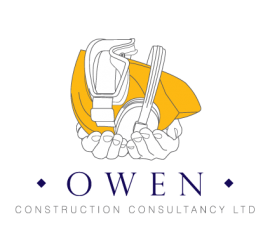The history of safety standards in construction is a tale of lessons learned through trial and tragedy. In the not-so-distant past, construction sites were often hazardous environments, characterised by lax safety protocols and minimal oversight.
Workers faced daily hazards without the protection of modern safety gear or comprehensive training programs. Accidents were tragically common, resulting in injuries, fatalities, and significant financial losses for companies.
The Rise of Regulatory Bodies
One of the earliest milestones in the evolution of safety standards was the establishment of regulatory bodies tasked with overseeing construction safety. These organisations played a pivotal role in setting and enforcing safety standards within the construction industry.
They introduced a framework of rules and regulations designed to address various aspects of safety, including fall protection, hazard communication, and equipment safety.
Embracing Training and Education
Another significant development was the proliferation of safety training programs aimed at educating workers and supervisors about potential hazards and best practices for mitigating risks.
These programs cover a wide range of topics, from proper lifting techniques to emergency response protocols, and are essential for fostering a culture of safety on construction sites. As a consultant, I have seen firsthand the positive impact that comprehensive training can have on reducing accidents and promoting a safer work environment.
Tapping Into Technological Innovations
In addition to government regulations and training initiatives, advancements in technology have also played a crucial role in improving safety standards in construction. Innovations such as wearable sensors, drones, and Building Information Modelling (BIM) software have enabled construction companies to identify and address safety risks more effectively.
For example, drones can be used to conduct aerial surveys of construction sites, identifying potential hazards such as unstable structures or unsafe working conditions.
Similarly, BIM software allows architects and engineers to simulate construction projects in a virtual environment, enabling them to identify and mitigate safety risks before construction begins.
The Role of the Construction Health and Safety Consultant
As safety standards continue to evolve, so too does the role of the construction health and safety consultant. These professionals play a vital role in helping companies navigate the complex landscape of safety regulations and implement best practices to protect workers and the public.
From conducting risk assessments to developing safety policies and procedures, consultants provide invaluable guidance and support to construction companies striving to maintain high safety standards.
Integrating Safety into Every Stage
One area where consultants can make a significant impact is in ensuring that safety considerations are integrated into every stage of the construction process.
From the initial design phase to project completion, consultants work closely with architects, engineers, and builders to identify potential hazards and implement measures to mitigate risks. This holistic approach to safety helps to prevent accidents before they occur, saving lives and minimising costly delays and litigation.
Serving as Liaisons and Support Systems
Another important role of the construction health and safety consultant is acting as a liaison between contractors and regulatory agencies.
Consultants stay abreast of changes to safety regulations and help companies ensure compliance with these requirements. They also assist with the development of safety plans and documentation, ensuring that companies have the necessary protocols in place to protect workers and mitigate risks.
The Crucial Role of Clerks of Works
One role that is sometimes overlooked but is crucial to ensuring safety on construction sites is that of the clerk of works. These individuals serve as on-site representatives for clients, ensuring that construction work is carried out in accordance with specifications and safety standards.
Clerks of works play a vital role in identifying and addressing safety issues as they arise, helping to prevent accidents and ensure that projects are completed safely and to the highest standards.
Conclusion
In conclusion, the evolution of safety standards in construction has been a journey marked by progress and perseverance. From humble beginnings to the comprehensive regulations and practices of today, the construction industry has made great strides in prioritising safety and protecting the well-being of workers and the public. As a health and safety consultant, I am proud to play a role in this ongoing evolution, working alongside industry stakeholders to promote a culture of safety for builders and ensure that construction projects are completed safely and successfully.
At Owen Construction Consultancy, we are dedicated to contributing to this ongoing evolution. Our team of experienced and qualified professionals provides a wide range of construction health and safety services, including:
- Risk assessments and hazard identification
- Development and implementation of safety plans and procedures
- Training programs for workers and supervisors
- Site inspections and audits
- Liaison with regulatory agencies
By partnering with Owen Construction Consultancy, you can ensure that your construction projects are completed safely, efficiently, and in compliance with all relevant regulations.
Contact us today to discuss your specific needs and learn how we can help you create a safer work environment for your employees and the public.
March 13, 2024
